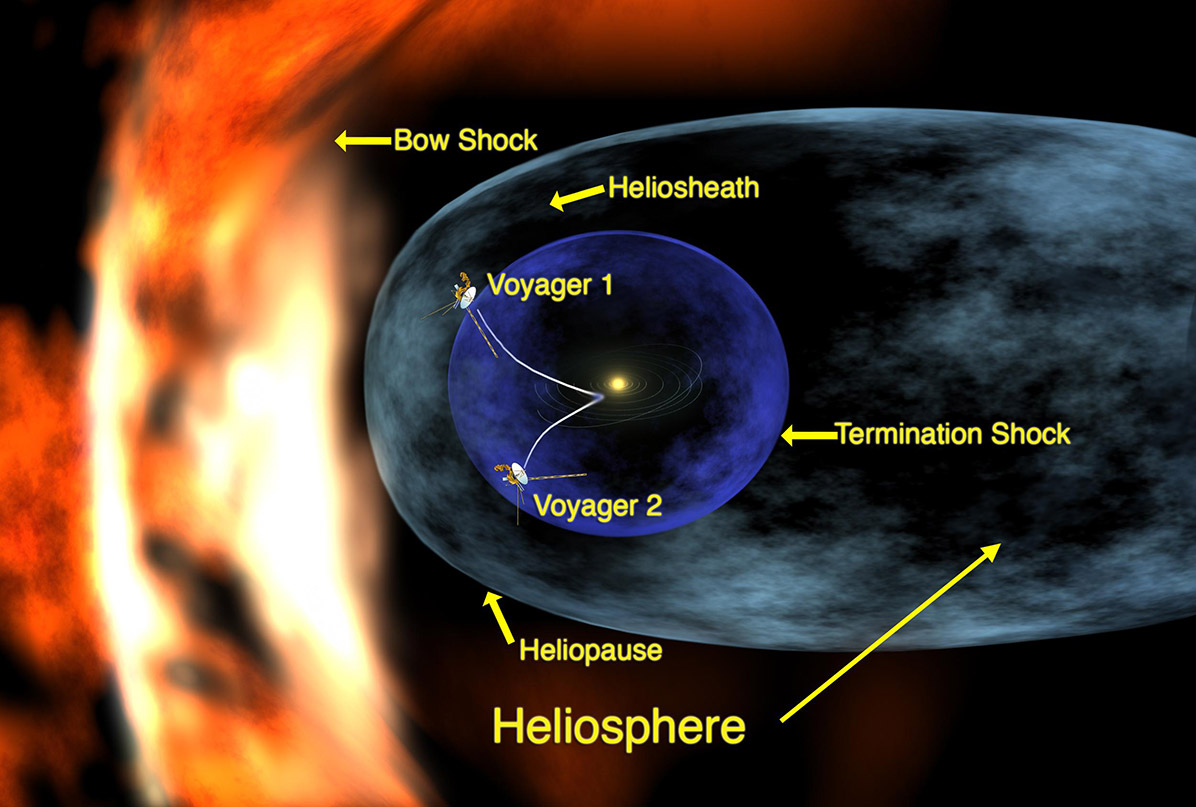HELIOSPHERE
The heliosphere is the sun’s extended atmosphere that surrounds the entire solar system. It is a vast, bubble-like region of space which surrounds and is created by the Sun.
In plasma physics terms, this is the cavity formed by the Sun in the surrounding interstellar medium. The heliosphere defines one type of boundary of the solar system.
On Earth, we live inside an atmosphere that sustains life. It also produces dynamic and often destructive weather phenomena to which we must adjust our lives—including hurricanes, tornadoes, torrential rains, and powerful winds. The heliosphere can be compared to this.
An idea that is foreign to many is that we also live inside the atmosphere of a star. Earth and the entire solar system sit inside the atmosphere of a star—an active and dynamic star we call the Sun.
This extended atmosphere is called the heliosphere. It consists of ionized gas (plasma), particles and magnetic field that interacts with the interplanetary environment producing different effects that we collectively call space weather.

Termination Shock
Blowing outward billions of kilometers from the Sun is the solar wind, a thin stream of electrically charged gas. This wind travels at an average speed ranging from 300 to 700 kilometers per second (700,000 – 1,500,000 miles per hour) until it reaches the termination shock. At this point, the speed of the solar wind drops abruptly as it begins to feel the effects of interstellar wind.
Heliosphere
The solar wind, emanating from the Sun, creates a bubble that extends far past the orbits of the planets. This bubble is the heliosphere, shaped like a long wind sock as it moves with the Sun through interstellar space.
Heliosheath
The heliosheath is the outer region of the heliosphere, just beyond the termination shock, the point where the solar wind slows abruptly, becoming denser and hotter. The solar wind piles up as it presses outward against the approaching wind in interstellar space.
Heliopause
The boundary between solar wind and interstellar wind is the heliopause, where the pressure of the two winds are in balance. This balance in pressure causes the solar wind to turn back and flow down the tail of the heliosphere.
Bow shock
As the heliosphere plows through interstellar space, a bow shock forms, similar to what forms as a ship plowing through the ocean.
Also shown are the two Voyager spacecraft with their approximate paths out of the Heliosphere.
Voyager I was deflected northward above the plane of the planets’ orbits when it swung by Saturn in 1980. Voyager II was deflected downward by Neptune and is heading southward below the plane of the planets.
Credit: NASA/Goddard/Walt Feimer
Header Image Credit: NASA/Goddard Space Flight Center

